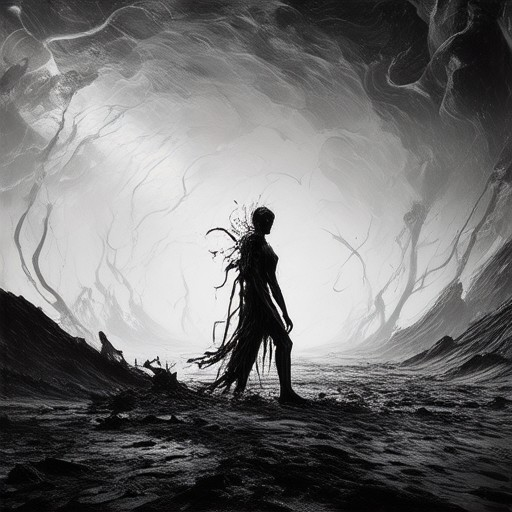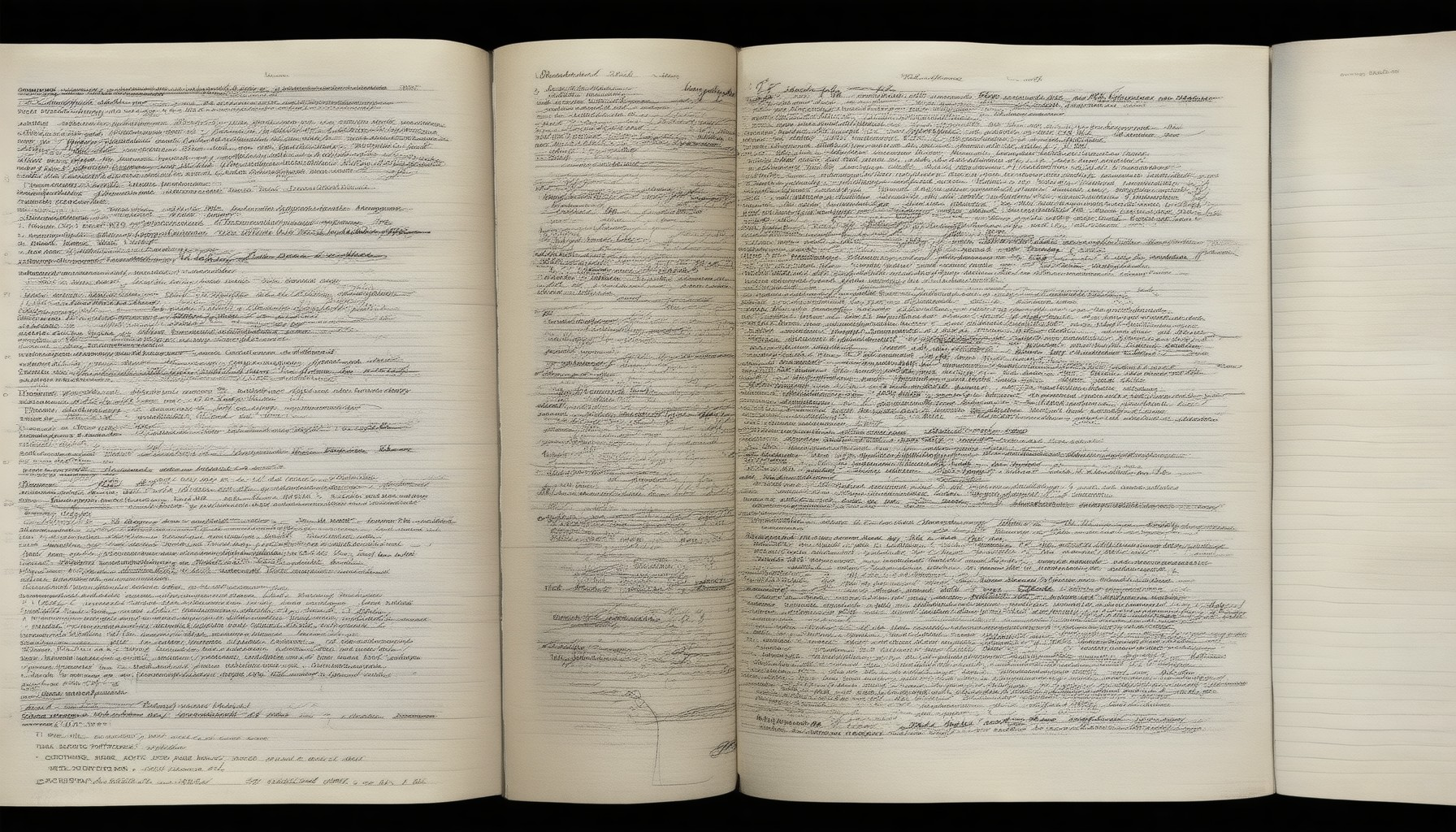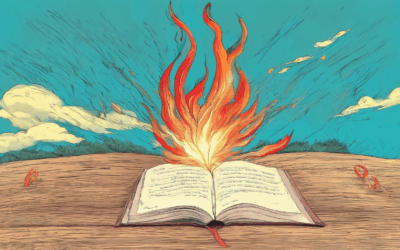Writing a compelling antagonist is a cornerstone of great storytelling, shaping narratives that captivate audiences and leave lasting impressions. Whether in literature, film, or other media, the antagonist plays a pivotal role in driving plots, exploring themes, and challenging protagonists to grow. In this comprehensive guide, we delve into the art of crafting unforgettable antagonists, offering step-by-step strategies to help you create characters who resonate long after the page turns. From understanding their motivations to developing depth and complexity, this guide explores how to infuse antagonists with realistic flaws and emotional layers, making them not just opponents but integral contributors to the story’s success. By mastering the nuances of antagonist creation, you can elevate your storytelling and leave readers pondering the complexities of human nature. Let’s embark on this journey to unlock the secrets of crafting antagonists that truly stand out.
Key Takeaways
- Antagonists Drive Conflict and Growth: Crafting compelling antagonists is essential for creating tension and propelling the narrative forward, while also fostering the protagonist’s development.
- Complex Motivations: Antagonists aren’t inherently bad; they are multi-dimensional characters with motivations ranging from personal flaws to noble causes, adding depth to the story.
- Examples of Great Antagonists: Figures like Mr. Darcy and Goneril exemplify how antagonists can transform through the story, showcasing growth and complexity.
- Contagonists: Modern Storytelling’s Nuanced Opponents: These characters present intellectual or emotional challenges, enriching the narrative with layers of conflict.
- Real-Life Inspiration: Just as real-world challenges shape us, antagonists in stories help protagonists confront and overcome obstacles, mirroring genuine struggles.
- Essential for Dynamic Narratives: Antagonists are crucial for keeping stories engaging, adding stakes, and ensuring the protagonist’s journey remains compelling.

How to Write a Compelling Antagonist
Creating a memorable antagonist requires careful thought and planning to ensure they are multi-dimensional and engaging. Here’s a step-by-step guide to crafting a compelling antagonist:
- Understand Their Motivation
- Develop Their Personality
- Craft a Backstory
- Establish Their Relationship with the Protagonist
- Define Their Goals
- Identify Their Weaknesses
- Influence the Story World
– Every antagonist has a reason for their actions. Whether it’s revenge, ambition, or a misguided sense of justice, understanding their motivation will help you create a believable character.
– James Whitfield Thomson emphasizes that motivations should be clear and relatable, even if the antagonist’s actions are morally questionable.
– Antagonists aren’t just evil for the sake of being evil. They should have distinct personalities that make them memorable.
– Consider giving them traits like cunning, charisma, or ruthlessness that contrast with the protagonist’s strengths.
– A strong backstory adds depth to your antagonist. Think about their history, failures, and experiences that shaped them into who they are today.
– A well-developed backstory makes the antagonist more relatable and complex.
– The dynamic between the protagonist and antagonist is crucial. It can range from intense rivalry to unexpected alliances.
– A complex relationship adds emotional weight and tension to the story.
– Clear goals give the antagonist direction and purpose. Whether it’s to destroy the protagonist or take over the world, their objectives should drive the plot forward.
– Aligning their goals with the protagonist’s can create natural conflicts and raise the stakes.
– Even the most powerful antagonists have weaknesses. Identifying these flaws makes them more realistic and provides opportunities for the protagonist to overcome them.
– Weaknesses can be physical, emotional, or psychological in nature.
– A strong antagonist impacts the story world around them. Their presence should disrupt the status quo and create challenges for the protagonist.
– They can cause events like wars, political upheavals, or social movements that shape the narrative.
By focusing on these elements, you’ll create an antagonist that is not only memorable but also essential to the story’s success. The key is to balance their threatening nature with depth and complexity, making them a fascinating character to engage with.
Antagonist Style of Writing
The antagonist style of writing focuses on developing a character or force that actively opposes the protagonist or central narrative. This technique is crucial in creating tension, driving plot progression, and adding depth to the story. Below are key aspects of the antagonist style:
Definition and Role
The antagonist is not merely a “villain” but a complex entity that challenges the protagonist’s goals, beliefs, or desires. This opposition creates conflict, propels the story forward, and often leads to character growth for both the protagonist and antagonist.
Types of Antagonists
- Static Antagonist : A fixed opponent with little to no development, serving as a constant threat.
- Dynamic Antagonist : A multifaceted character who evolves throughout the story, presenting evolving challenges to the protagonist.
Examples of Antagonistic Styles
- Literary Antagonists : Characters like Mr. Darcy in “Pride and Prejudice” or Darth Vader in Star Wars, who initially oppose the protagonist but later reveal complexity.
- Real-Life Inspirations : Historical figures like Napoleon Bonaparte or political leaders who embody resistance against the protagonist’s aspirations.
Creating a Strong Antagonist
To master the antagonist style, consider:- Motivation : What drives the antagonist? Is it fear, ambition, or a genuine belief in their cause?- Complexity : Give the antagonist depth, showing their vulnerabilities and relatable qualities.- Evolution : Allow the antagonist to grow, reflecting the protagonist’s growth as well.
Impact on Storytelling
A well-crafted antagonist enhances the narrative by: – Increasing stakes and suspense. – Providing insight into the protagonist’s character through interaction. – Expanding the story’s themes and moral dimensions.
Exploring Further
For deeper insights into crafting compelling antagonists, visit James Whitfield Thomson and discover expert tips on storytelling techniques and narrative development. Explore how to balance antagonist strength with protagonist resilience, ensuring a dynamic and engaging story arc.
By mastering the antagonist style, writers can elevate their work, creating stories that resonate emotionally and intellectually with readers.

What is an Example of an Antagonist?
An antagonist is a character or force that represents an obstacle or opponent to the protagonist or the story’s goals. They often serve to drive conflict, develop themes, and provide tension in a narrative. Below are examples of well-known antagonists across various mediums:
Examples of Antagonists
- Literature: Mr. Ebenezer Scrooge in “A Christmas Carol” by Charles Dickens
- Film: Darth Vader in “Star Wars: The Empire Strikes Back”
- Film: Hannibal “The Cannibal” Lecter in “The Silence of the Lambs”
- Television: Walter White in “Breaking Bad” (though he transitions into an antihero role)
- Video Games: Ganondorf in “The Legend of Zelda” series
Types of Antagonists
- Traditional Antagonists: Clear-cut villains who oppose the protagonist
- Antiheroes: Characters who may have morally ambiguous motivations
- Force Antagonists: Powers or entities causing indirect opposition (e.g., nature or society)
Real-Life Antagonists
- Historical Figures: Adolf Hitler, a classic example of a historical antagonist
- Societal Forces: Oppressive regimes or systems that create antagonistic conditions
The Role of Antagonists
Antagonists are essential in storytelling as they provide challenges, growth opportunities for protagonists, and often reflect the complexities of the story’s world.
For more insights into crafting compelling narratives and understanding character development, explore James Whitfield Thomson’s literary platform .

Why Do Writers Create Antagonists?
Writers create antagonists to drive conflict, develop characters, and enrich the narrative. Here’s a breakdown of the key reasons:
- To Create Conflict : Antagonists introduce challenges that the protagonist must overcome, propelling the story forward. This conflict is essential for both drama and comedy, as it creates tension and keeps the audience engaged.
- Character Development : By facing opposition, protagonists grow and evolve. Antagonists often serve as mirrors, reflecting the protagonist’s flaws or helping them discover hidden strengths.
- Exploring Themes and Ideologies : Antagonists frequently represent opposing forces or ideologies, allowing writers to delve into moral dilemmas and societal issues. This adds depth and meaning to the story.
- Adding Layers to the Plot : An effective antagonist complicates the narrative, introducing subplots and twists that keep readers invested. Their presence ensures the story doesn’t become predictable or monotonous.
In essence, antagonists are vital for creating a compelling and dynamic story, making them an indispensable element in any writer’s toolkit.
Are Antagonists Bad People?
Antagonists in storytelling are often misunderstood. They are not inherently “bad” people, but rather complex characters who create conflict and drive the plot forward. Their motivations may stem from personal flaws, societal pressures, or even noble causes, making them multifaceted and relatable.
The Role of Antagonists
Antagonists serve as a mirror to the protagonist, reflecting their weaknesses or aspirations. While they may seem like adversaries, their presence often highlights the protagonist’s growth and transformation. For instance:
- Mr. Darcy in Pride and Prejudice is initially seen as arrogant, but his character development shows he is capable of love and self-awareness.
- Goneril in King Lear represents the consequences of neglecting moral responsibilities, leading to tragic outcomes.
Real-Life Analogies
In real life, antagonists can be thought of as forces of opposition or challenge. They may be competitors, adversaries, or even societal norms that push individuals to grow. Understanding their motivations can provide insight into human behavior and decision-making processes.
Complex Characters
One of the key traits of a good antagonist is their complexity. They are not one-dimensional villains but rather characters with depth. Their actions often arise from a mix of ambition, fear, or a sense of justice, making them as intriguing as the protagonists they oppose.
Story Dynamics
From a storytelling perspective, antagonists are essential because they create tension and stakes. Without them, narratives would lack direction and conflict. Their presence ensures that the protagonist must confront challenges, leading to personal growth and the resolution of the story.
Conclusion
Antagonists are not inherently bad people. They are dynamic characters who play crucial roles in shaping the narrative. By understanding their motivations and complexities, we gain a richer appreciation for the stories they are part of.
James Whitfield Thomson explores these themes in depth, offering insights into character development and storytelling techniques.

What is a Contagonist?
A contagonist is a character or entity that serves as a significant opponent or adversary to the protagonist in a story, play, or game. Unlike traditional antagonists who often have clear motivations and seek direct conflict, a contagonist may present a more complex or nuanced challenge to the protagonist. This can involve intellectual opposition, emotional manipulation, or even moral dilemmas, making their role more multifaceted.
Examples in Different Media:
- Literature : In novels, a contagonist might be a character who challenges the protagonist’s beliefs or decisions through dialogue or actions, leading to deeper exploration of themes and character development.
- Film and Television : In movies or TV shows, a contagonist could be a rival character who competes with the protagonist for success, status, or affection, adding tension and drama to the storyline.
- Video Games : In gaming, a contagonist might be a boss or primary enemy who requires unique strategies or perspectives to defeat, offering rich narratives and immersive experiences.
Function Within Stories:
- Complexity : Contagonists often bring depth to stories by forcing protagonists to confront personal weaknesses or ethical questions.
- Dynamics : Their relationships with protagonists can vary, ranging from outright hostility to subtle influence, depending on the story’s needs.
- Impact : Effective contagonists can elevate the quality of a narrative, making the protagonist’s journey more compelling and relatable.
By understanding the role of a contagonist, readers and players can better appreciate the layers of conflict and character development in various forms of entertainment.





0 Comments